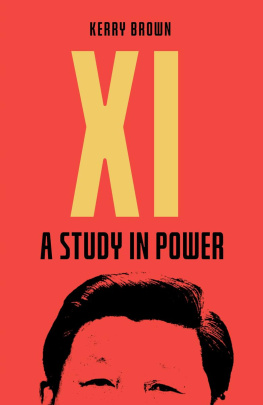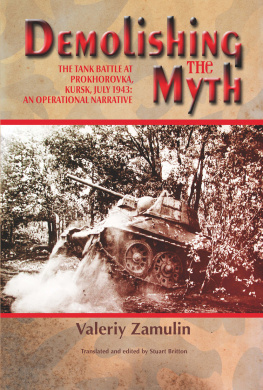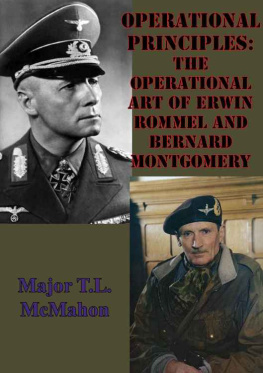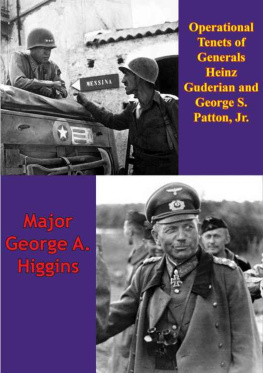
This edition is published by PICKLE PARTNERS PUBLISHINGwww.picklepartnerspublishing.com
To join our mailing list for new titles or for issues with our books picklepublishing@gmail.com
Or on Facebook
Text originally published in 1987 under the same title.
Pickle Partners Publishing 2014, all rights reserved. No part of this publication may be reproduced, stored in a retrieval system or transmitted by any means, electrical, mechanical or otherwise without the written permission of the copyright holder.
Publishers Note
Although in most cases we have retained the Authors original spelling and grammar to authentically reproduce the work of the Author and the original intent of such material, some additional notes and clarifications have been added for the modern readers benefit.
We have also made every effort to include all maps and illustrations of the original edition the limitations of formatting do not allow of including larger maps, we will upload as many of these maps as possible.
KURSK: A STUDY IN OPERATIONAL ART.
By
Maj Kerry K. Pierce, USA.
TABLE OF CONTENTS
Contents
TABLE OF CONTENTS
REQUEST FROM THE PUBLISHER
Figures:
1. Eastern Theater of War -March 1943
2. Army Group South situation -March 1943
3. Russian defenses at Kursk
4. German offensive plan (ZITADELLE)
5. Ninth Armys attack
6. Fourth Panzer Armys attack
7. Operation KUTUZOV
8. Operation RUMYANTSEV
ABSTRACT
KURSK: A STUDY IN OPERATIONAL ART. By MAJ Kerry K. Pierce, USA.
This monograph examines the practice of operational art from the perspective of the Kursk Campaign of July-October, 1943. The study begins by presenting the German and Russian campaign plans as examples of two different methods of achieving a desired end state. Each plans vision of the future was heavily influenced by the nature of the strategic situation and the personalities of the two principal artists: Adolph Hitler and Marshal Georgii Zhukov. These two leaders had vastly different understandings of strategic possibilities, time-space dimensions of the battlefield, and the means required to achieve their desired end states. The success of Zhukovs campaign plan was directly related to his linkage of appropriate means and methods toward a desired end state, while Hitlers failure represented a failure to do likewise. The monograph also uses Kursk to examine several theoretical concepts of war. These include the relative strength of offense and defense, culminating points, the art of combinations, use of reserves, and the center of gravity.
The Russian decision to defend first against an expected German offensive is an excellent example of the use of operational art. Acting on the information of the LUCY espionage network, Zhukov constructed his campaign around an unprecedented tactical defensive system in an effort to destroy the German armored formations as they attacked toward Kursk. He intended to initiate his counteroffensive at the point where the German panzer corps had been so attrited that they would not be able to prevent a Russian onslaught which would expel all German forces from the Donetz Basin. German operational flexibility, which had been the hallmark of their previous campaigns, was eliminated by Hitlers centrally devised and executed plan, reducing commanders such as Manstein and Model to mere tactical actors. In the end the Russian victory was a complete one: tactical, operational and strategic. It also secured the strategic initiative for the remainder of the war.
SECTION I: INTRODUCTION
How many people do you think even know where Kursk is? Its a matter of profound indifference to the world whether we hold Kursk or not. I repeat my question: Why do we want to attack in the East at all this year? Hitlers reply was: Youre quite right. Whenever I think of this attack my stomach turns over. {1}
From the perspective of western accounts of the Second World War Kursk is synonymous with the wars largest tank battle. Far more than a single clash of armor, however, the Kursk campaign endured over a period of two months, involving over two million combatants, six thousand tanks, and five thousand tactical aircraft. When it had run its course the strategic scales were tipped irreversibly in favor of the Soviet Union. Never again would Germany marshal the necessary reserves to exercise the strategic initiative in the East. Just as important for the Red Army, blitzkrieg was defeated tactically for the first time on the fields of Kursk, thereby paving the way for Russias first successful summer offensive. For these reasons it is Kursk not Stalingrad which holds the attention of Soviet historians as the decisive turning point in the Eastern Theater of War.
In the study of operational art, Kursk has much to offer in terms of both planning and execution. In the following narrative we will portray a clear dichotomy in the campaign plans of the two belligerents to the extent that tactical means and events were linked ultimately to a strategic end state. In the final analysis the campaigns outcome itself provides the definitive judgment on the effectiveness of each plan. We will also be able to evaluate the two principal artists of the action from the perspective of planning and conduct of operations amid the fog and friction of war. Finally, Kursk provides an excellent laboratory in which to test several theoretical concepts of war including the relative strength of offense and defense, culminating points, the art of combinations, use of reserves, and the center of gravity.
SECTION II: STRATEGIC SITUATION
By late March 1943 the Eastern Theater of War had settled into relative inactivity. The spring thaw accompanied by oceans of mud certainly contributed to the respite, but so too did the exhausting events of the previous winter. The Red Armys winter offensive which sealed the fate of Pauluss 6th Army at Stalingrad achieved tremendous territorial gains, but ended disappointingly.
Still learning their operational craft, the Soviets had again overextended themselves logistically and fell prey to the operational agility of German armored formations. Failure in the end stemmed from overconfidence and an inability to match tactical resources to operational ends. The German counteroffensive of February not only inflicted heavy losses on Soviet tank units, but also succeeded in recapturing much of the lost territory, including the cities of Kharkov and Belgorod. It was evident that the German Army, and Manstein in particular, still occupied the operational high ground and could still inflict devastating destruction despite the Stalingrad setback.
The stabilized Eastern Front in March 1943 stretched from Leningrad in the north to the Sea of Azov in the south, a distance of 2,000 miles. One of the most distinguishing features throughout its length was the massive Kursk salient thrusting some 140 miles into the German zone and extending north to south 170 miles. (See figure 1, page 36) Historically salients of this kind commanded a great deal of attention; Kursk would prove to be no exception. For the Germans it presented the opportunity to destroy overextended armored forces; on the other hand the Russians saw it as a possible launching point for a renewed offensive. The attraction was evident, but it would require outside events and situations to push the adversaries to actual operations there.













